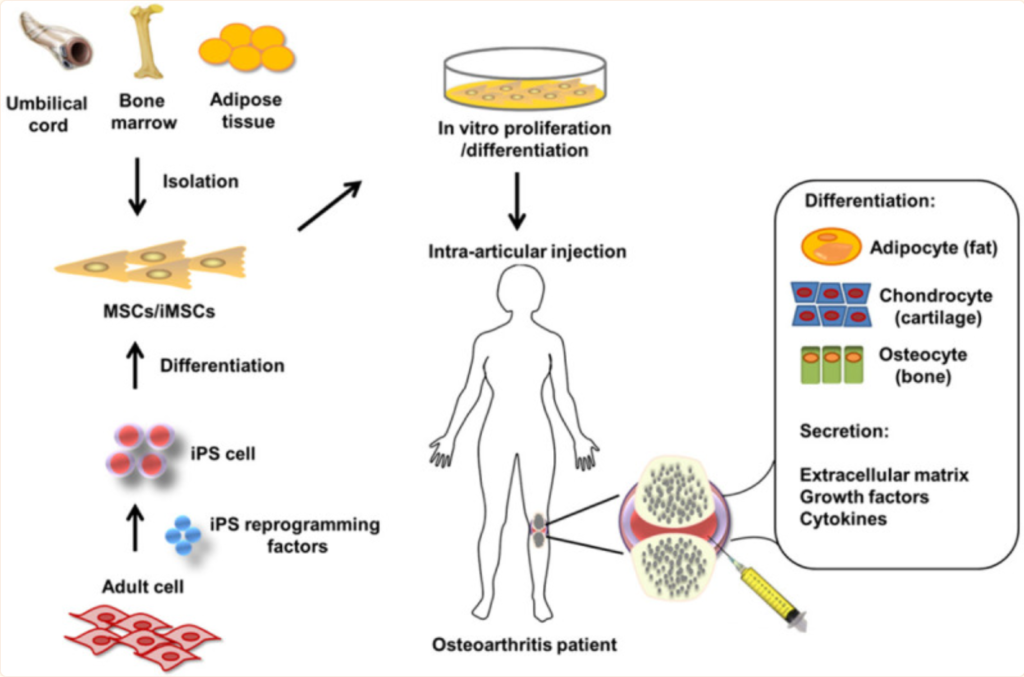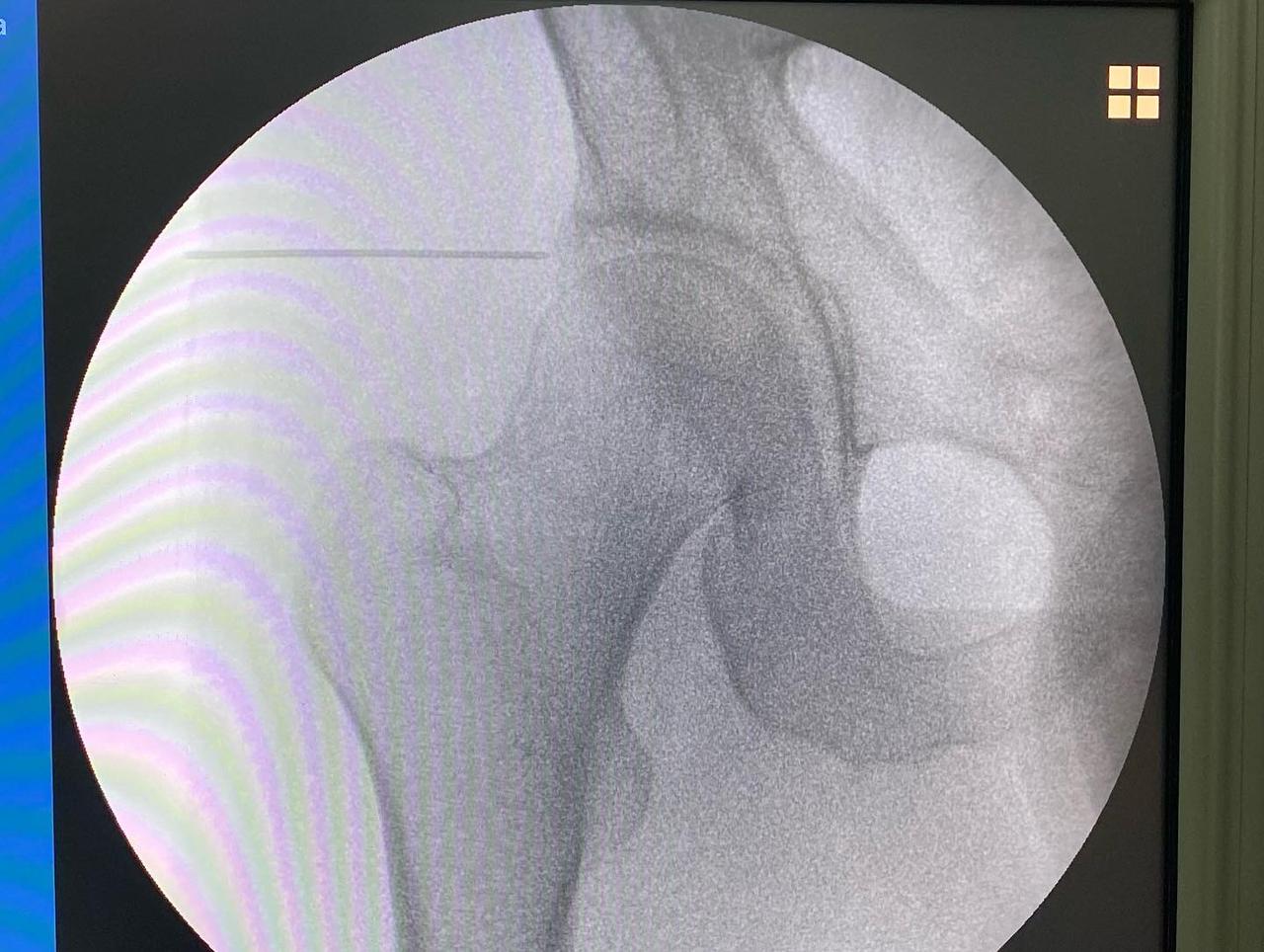We’ve had several close relatives who have seen full elimination of pain and full recovery of range of motion with stem cells into their knees. Olga has done both her left knee and her hip and seen full recovery. We did some consults with other friends who had joint pain in their feet or hands. One of the challenges in that case is injecting the stem cells into the capsule (the space between the joints). When in injecting into the capsule of the knee or hip, there’s a lot of space to absorb the stem cells. The hands and feet have much smaller capsules, so any injection there can be very painful. One solution that might work is to try a large dose of systemic (I.V.) stem cells to reduce inflammation and help the joints recover that way. Olga has arthritis in her big toe and though she never did an injection into that location, her pain and swelling have disappeared completely since doing stem cells. In the past, a few hours of dancing would cause the pain to get much worse. Now she can dance for 8-10 hrs a day for several days in a row with no pain at all.
Here’s some more about joint pain:
Osteoarthritis (OA) is a chronic joint disease that generally occurs worldwide with pain and disability. The progression is slow, and it is mostly diagnosed midlife and often disturbs the knees, hips, feet, hands, and spine. Sex, age, obesity, occupation, and hereditary factors are risk factors that increase the opportunity for OA. Physical examinations involving X-rays and MRI, joint fluid analysis and blood tests are common tools for the diagnosis of OA. Interventions including exercise, manual therapy, lifestyle modification, and medication can help relieve pain and maintain mobility in the affected joints, yet none of the therapies enables the promotion of regeneration of degenerated tissues. Mesenchymal stem cells (MSCs) are a promising source for the treatment of OA due to their multipotency for differentiation into chondrocytes and their ability to modulate the immune system. Herein, we review the pathogenesis and treatment of OA and address the current status of MSCs as a novel potential therapeutic agent in OA treatment.

Treatment of osteoarthritis
The principal aims for OA treatment are reducing pain, slowing the progression of joint destruction and maintaining and even improving mobility function [54]. Numerous nonpharmacological and pharmacological therapies are currently applied to relieve pain and maintain the function of joint tissues in the treatment of OA. In addition to traditional medication, a number of novel therapeutic strategies are being examined and developed. In addition, combinational therapies are commonly used in OA treatment to maximize the effects beyond what a single application can reach [55].
Mobility and quality of life are determined to a great part by the health of our joints and soft tissues. Stem cells can repair injured and worn out tendons, fascia and muscles to get you back on the court, dancing again, and rediscovering the joy of movement.
OA is becoming increasingly popular in modern society. Environmental factors and metabolic and inflammatory factors are highlighted in the pathogenesis of OA. Both nonpharmacological and pharmacological strategies are reviewed in the treatment of OA. The main goals of traditional medication and biological agents in OA treatment are relief of pain and slowing down or halting of the progress of OA. Stem cell-based therapy is of great interest in regenerative medicine because of its potential in the regeneration of new cartilage and strong immunoregulatory capacity. Positive results in preclinical and clinical trials have demonstrated that MSC-based agents are a promising strategy in the treatment of OA. However, the limitations and risks of MSC-based therapy should be realized and treated carefully. First, we have an inadequate understanding of MSCs regarding their physiological properties and cellular functions in vitro and in vivo, including the mechanisms of immune modulation and the role of key mediators in differentiation. Second, the therapeutic efficacy of MSCs in preclinical and clinical studies is influenced by many factors, such as the cell culture conditions, the cell density, the time and location for MSC transplantation and the pretreatment of MSCs by LLLT or inflammatory cytokines. These factors should be elucidated more cautiously in future studies to maximize the potential and minimize the adverse effects of MSCs in OA treatment. Third, since MSCs are multipotent cells with a high capability of cell proliferation and differentiation and both autologous and allogeneic MSCs have been applied in several studies, the risks regarding the tumorigenesis potential and serious unwanted immunoregulatory responses in preclinical and clinical trials should be further considered.
Despite the current limitations and risks, cell therapy, especially MSC-based therapy, is becoming an encouraging approach to regenerative medicine in the treatment of OA. The positive effects of pretreatment with LLLT on MSCs indicate that the combination of MSC-based therapy with other treatments might achieve better efficacy in regenerative medicine.


